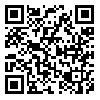Volume 23, Issue 2 (Summer 2019)
jwss 2019, 23(2): 349-359 |
Back to browse issues page
Download citation:
BibTeX | RIS | EndNote | Medlars | ProCite | Reference Manager | RefWorks
Send citation to:



BibTeX | RIS | EndNote | Medlars | ProCite | Reference Manager | RefWorks
Send citation to:
Shabani A. Determining the Optimum Applied Water for Sugar Beet in the Case of Crop Price as a Function of Applied Irrigation Water. jwss 2019; 23 (2) :349-359
URL: http://jstnar.iut.ac.ir/article-1-3522-en.html
URL: http://jstnar.iut.ac.ir/article-1-3522-en.html
1. Department of Water Science and Engineering, Faculty of Agriculture, Fasa University, Fasa, Iran. , shabani8ali@gmail.com
Abstract: (6457 Views)
Shortage of irrigation water is a major problem constraining in agricultural production in arid and semi-arid regions. Deficit irrigation is one way to cope with water scarcity and increase water use efficiency. Determining the optimum applied water based on economic analysis is a major key to the deficit irrigation strategy. In this study, the required equations were derived to determine the optimum applied water for sugar beet when crop price is a function of the applied water. The results showed that the optimum applied water under land limiting conditions (144.98 cm) resulted in the maximum net benefit per unit area (2089741 Rials ha-1). Applying the optimum water depth under land limiting resulted in 17.48% decrease in the applied water and 15.05% increase in the total net benefit, in comparison with the maximum yield condition. In water limiting conditions (land is not limiting), the total net benefit was maximized by applying the saved water to put larger areas of land under irrigation. Applying the optimum water depth under water limit condition resulted in 31.2% decrease in applied water and 45 and 52.36% increase in the planting area and the total net benefit, in comparison with the maximum yield condition, respectively. Sugar beet planting can be, therefore, profitable if the applied water depth is greater than 67.53 cm in this study area.
| Rights and permissions | |
 |
This work is licensed under a Creative Commons Attribution-NonCommercial 4.0 International License. |






